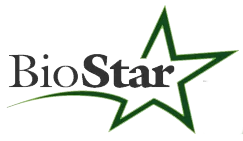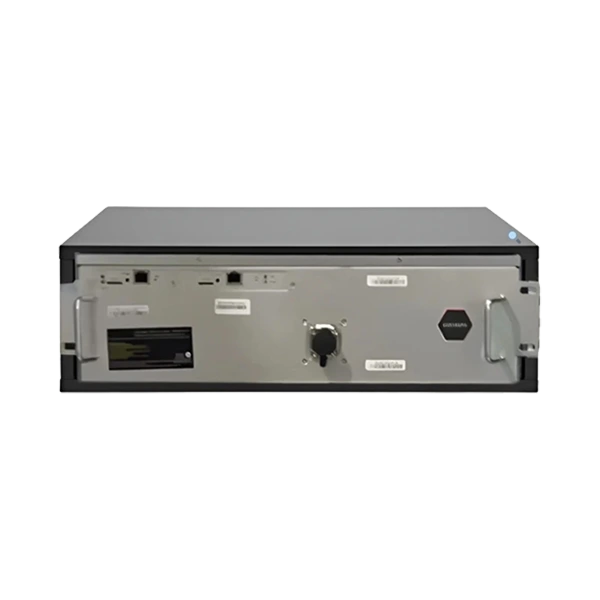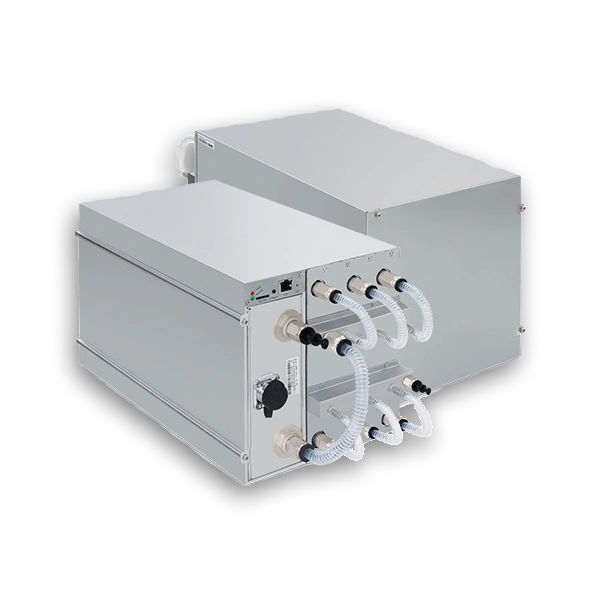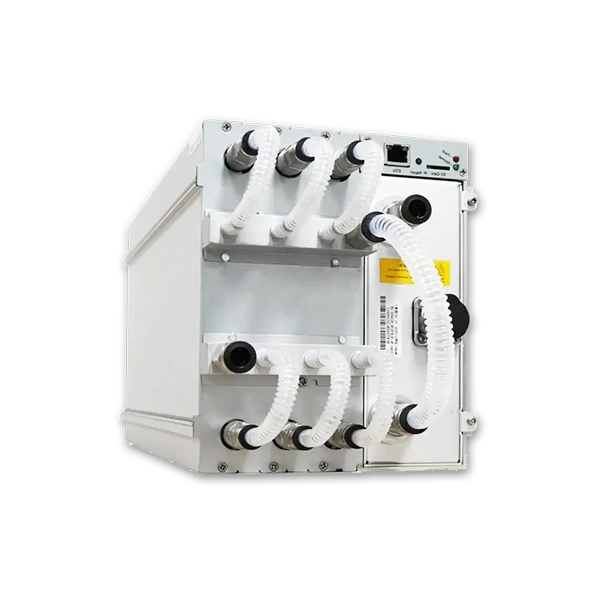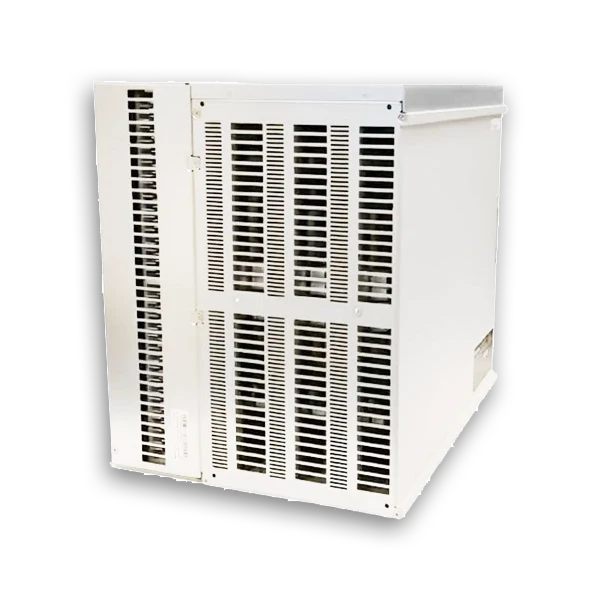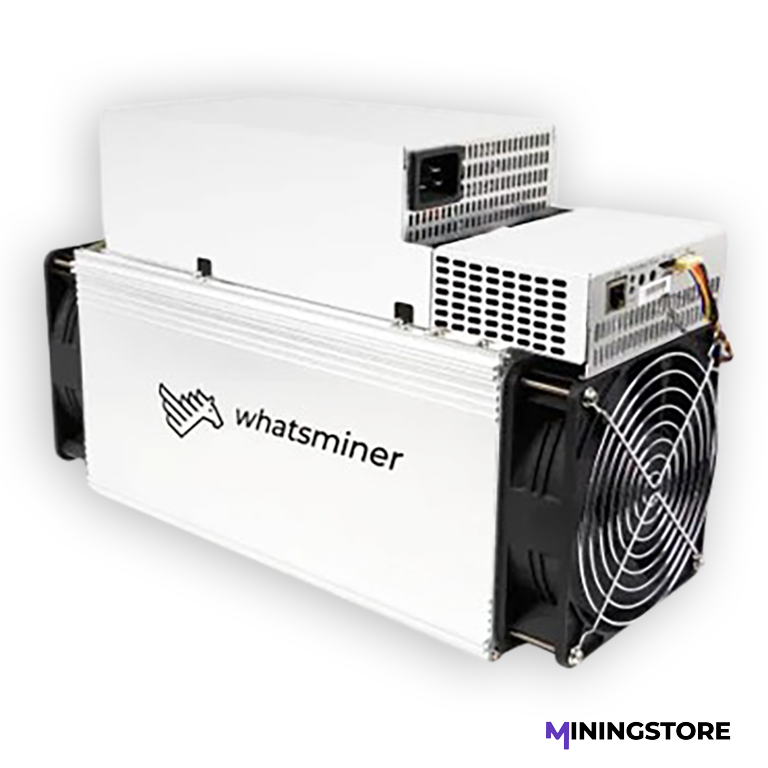

WHATSMINER M50S 122TH
SKU: MIAM50S27W122
$1,403.00 USD
Mininum Order Qty IS 10
- Hashrate: 120TH
- Algorithum: SHA-256
Out of stock
WHATSMINER M50S 122TH
$1,403.00
The Future of Mining
The WHATSMINER M50S 122TH Series is the latest generation of Asic Miners that are designed with advanced technology, improving operations and ensuring long-term operations for future mining. Industry-Leading Hash Rates, Reaching The next-generation achieves ± 3% TH/s leading the industry through performance. J/TH Power Efficiency. The has a power consumption of ± 5% W and power efficiency of J/TH, further improving the efficiency from its predecessor.
is An application-specific integrated circuit (ASIC) is an integrated circuit (IC) chip customized for a particular use, rather than intended for general-purpose use. For example, a chip designed to run in a digital voice recorder or a high-efficiency Bitcoin miner is an ASIC. Application-specific standard product (ASSP) chips are intermediate between ASICs and industry-standard integrated circuits like the 7400 series or the 4000 series. ASIC chips are typically fabricated using metal-oxide-semiconductor (MOS) technology, as MOS integrated circuit chips.
MicroBT is a manufacturer of cryptocurrency, blockchain, and artificial intelligence computing hardware, and also operates the world’s largest and second-largest Bitcoin mining pools according to the companies website.
As feature sizes for have shrunk and design tools improved over the years, the maximum complexity (and hence functionality) possible in an ASIC has grown from 5,000 logic gates to over 100 million. Modern ASICs often include entire microprocessors, memory blocks including ROM, RAM, EEPROM, flash memory, and other large building blocks. Such an ASIC is often termed an SoC (system-on-chip). Designers of digital ASICs often use a hardware description language (HDL), such as Verilog or VHDL, to describe the functionality of ASICs.
utilizes Field-programmable gate arrays (FPGA) are the modern-day technology for building a breadboard or prototype from standard parts[vague]; programmable logic blocks and programmable interconnects allow the same FPGA to be used in many different applications. For smaller designs or lower production volumes, FPGAs may be more cost-effective than an ASIC design, even in production. The non-recurring engineering (NRE) cost of an ASIC can run into the millions of dollars. Therefore, device manufacturers typically prefer FPGAs for prototyping and devices with low production volume and ASICs for very large production volumes where NRE costs can be amortized across many devices.
Early ASICs used gate array technology. By 1967, Ferrari and InterDesign were manufacturing early bipolar gate arrays. In 1967, Fairchild Semiconductor introduced the Micro matrix family of bipolar diode–transistor logic and transistor-transistor logic arrays.
Complementary metal-oxide-semiconductor (CMOS) technology opened the door to the broad commercialization of gate arrays. The first CMOS gate arrays were developed by Robert Lipp in 1974 for International Microcircuits, Inc.
utilizes a Metal-oxide-semiconductor standard cell technology was introduced by Fairchild and Motorola, under the trade names Micromosaic and Polycell, in the 1970s. This technology was later successfully commercialized by VLSI Technology and LSI Logic.
A successful commercial application of gate array circuitry was found in the low-end 8-bit ZX81 and ZX Spectrum personal computers, introduced in 1981 and 1982. These were used by Sinclair Research essentially as a low-cost I/O solution aimed at handling the computer’s graphics.
Customization occurred by varying a metal interconnect mask. Gate arrays had complexities of up to a few thousand gates; this is now called mid-scale integration. Later versions became more generalized, with different base dies customized by both metal and polysilicon layers. Some base dies also include random-access memory (RAM) elements.


Algorithm
SHA-256
Power Consumption
Hashrate
120THTH/S
Mineable Coins With
Bitcoin
Bitcoin Cash
Fully Managed Crypto Hosting
Leverage years of hosting expertise to maximize your crypto mining profitability with our proven solution
Techinical Specifications
Hashrate: 120THTh
Noise: Unlisted
Fans / Cooling: 2
Voltage: 12V
Interface: Ethernet
Humidity: %
The Future of Mining
The Series is the latest generation of Asic Miners that are designed with advanced technology, improving operations and ensuring long-term operations for future mining. Industry-Leading Hash Rates, Reaching The next-generation achieves ± 3% TH/s leading the industry through performance. J/TH Power Efficiency. The has a power consumption of ± 5% W and power efficiency of J/TH, further improving the efficiency from its predecessor. is An application-specific integrated circuit (ASIC) is an integrated circuit (IC) chip customized for a particular use, rather than intended for general-purpose use. For example, a chip designed to run in a digital voice recorder or a high-efficiency Bitcoin miner is an ASIC. Application-specific standard product (ASSP) chips are intermediate between ASICs and industry-standard integrated circuits like the 7400 series or the 4000 series. ASIC chips are typically fabricated using metal-oxide-semiconductor (MOS) technology, as MOS integrated circuit chips. MicroBT is a manufacturer of cryptocurrency, blockchain, and artificial intelligence computing hardware, and also operates the world’s largest and second-largest Bitcoin mining pools according to the companies website. As feature sizes for have shrunk and design tools improved over the years, the maximum complexity (and hence functionality) possible in an ASIC has grown from 5,000 logic gates to over 100 million. Modern ASICs often include entire microprocessors, memory blocks including ROM, RAM, EEPROM, flash memory, and other large building blocks. Such an ASIC is often termed an SoC (system-on-chip). Designers of digital ASICs often use a hardware description language (HDL), such as Verilog or VHDL, to describe the functionality of ASICs. utilizes Field-programmable gate arrays (FPGA) are the modern-day technology for building a breadboard or prototype from standard parts[vague]; programmable logic blocks and programmable interconnects allow the same FPGA to be used in many different applications. For smaller designs or lower production volumes, FPGAs may be more cost-effective than an ASIC design, even in production. The non-recurring engineering (NRE) cost of an ASIC can run into the millions of dollars. Therefore, device manufacturers typically prefer FPGAs for prototyping and devices with low production volume and ASICs for very large production volumes where NRE costs can be amortized across many devices. Early ASICs used gate array technology. By 1967, Ferrari and InterDesign were manufacturing early bipolar gate arrays. In 1967, Fairchild Semiconductor introduced the Micro matrix family of bipolar diode–transistor logic and transistor-transistor logic arrays. Complementary metal-oxide-semiconductor (CMOS) technology opened the door to the broad commercialization of gate arrays. The first CMOS gate arrays were developed by Robert Lipp in 1974 for International Microcircuits, Inc. utilizes a Metal-oxide-semiconductor standard cell technology was introduced by Fairchild and Motorola, under the trade names Micromosaic and Polycell, in the 1970s. This technology was later successfully commercialized by VLSI Technology and LSI Logic. A successful commercial application of gate array circuitry was found in the low-end 8-bit ZX81 and ZX Spectrum personal computers, introduced in 1981 and 1982. These were used by Sinclair Research essentially as a low-cost I/O solution aimed at handling the computer’s graphics. Customization occurred by varying a metal interconnect mask. Gate arrays had complexities of up to a few thousand gates; this is now called mid-scale integration. Later versions became more generalized, with different base dies customized by both metal and polysilicon layers. Some base dies also include random-access memory (RAM) elements.Ready to Buy
WHATSMINER M50S 122THs
- Payment Policy
- Processing & Shipping
- Volume Dicsounts
- We accept payments via Wire Transfer through banks, cryptocurrency (Bitcoin, Ethereum), or stable coins (USDC, USDT).
- All prices on our website are listed in US Dollars.
Due to the volatile nature of cryptocurrencies, the exact amount to be paid for WHATSMINER M50S 122THs’ will be in USD and require conversion at time of purchase. - Please note: All WHATSMINER M50S 122THs’ are subject to market fluctuations
- All WHATSMINER M50S 122TH Orders are dispatched after purchase is finalized, typically shipping within 10 Business days from the warehouse. Bulk orders may require an additional 1-2 days.
- International WHATSMINER M50S 122TH deliveries typically take 5-14 business days to arrive on site in the USA.
- All WHATSMINER M50S 122TH sales are final and non-refundable.
- For volume discount, pricing and availability of WHATSMINER M50S 122THs’, contact us at sales@miningstore.com or Click Here get a quote on your preferred miner.


